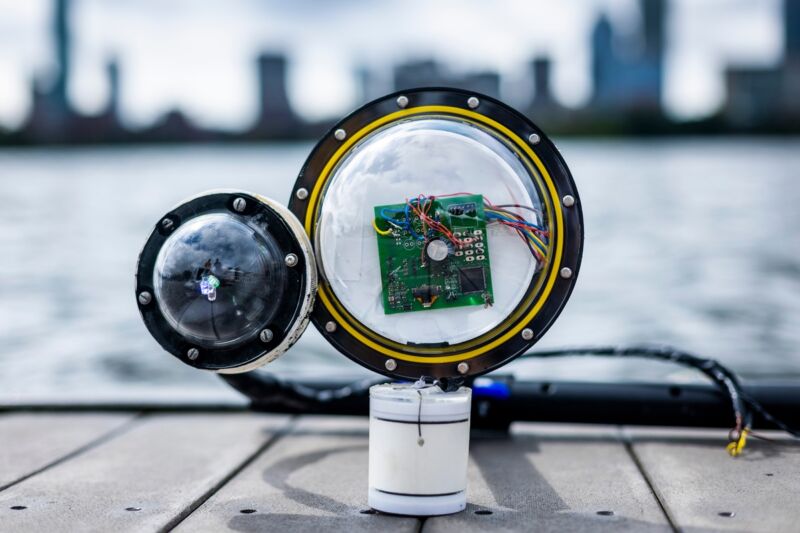
Enlarge / MIT engineers built a battery-free, wireless underwater camera that could help scientists explore unknown regions of the ocean, track pollution, or monitor the effects of climate change. (credit: Adam Glanzman)
MIT engineers have built a wireless, battery-free underwater camera, capable of harvesting energy by itself while consuming very little power, according to a new paper published in the journal Nature Communications. The system can take color photos of remote submerged objects—even in dark settings— and convey the data wirelessly for real-time monitoring of underwater environments, aiding the discovery of new rare species or monitoring ocean currents, pollution, or commercial and military operations.
We already have various methods of taking underwater images, but according to the authors, "Most of the ocean and marine organisms have not been observed yet." That's partly because most existing methods require being tethered to ships, underwater drones, or power plants for both power and communication. Those methods that don't use tethering must incorporate battery power, which limits their lifetime. While it's possible in principle to harvest energy from ocean waves, underwater currents, or even sunlight, adding the necessary equipment to do so would result in a much bulkier and more expensive underwater camera.
So the MIT team set about developing a solution for a battery-free, wireless imaging method. The design goal was to minimize the hardware required as much as possible. Since they wanted to keep power consumption to a minimum, for instance, the MIT team used cheap off-the-shelf imaging sensors. The trade-off is that such sensors only produce grayscale images. The team also needed to develop a low-power flash as well, since most underwater environments don't get much natural light.
No comments:
Post a Comment